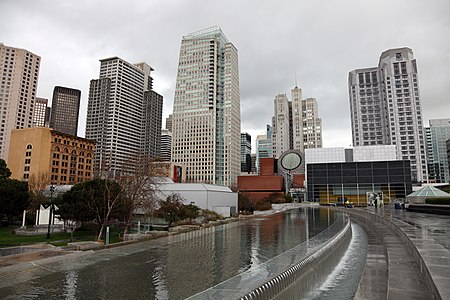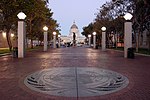South of Market, San Francisco
Adaptive reuse of industrial structures in the San Francisco Bay AreaEconomy of San FranciscoGay villages in CaliforniaLGBT culture in San FranciscoNeighborhoods in San Francisco ... and 3 more
South of Market, San FranciscoTourist attractions in San FranciscoWarehouse districts of the United States

South of Market (SoMa) is a neighborhood in San Francisco, California, situated just south of Market Street. It contains several sub-neighborhoods including South Beach, Yerba Buena, and Rincon Hill. SoMa is home to many of the city's museums, to the headquarters of several major software and Internet companies, and to the Moscone Conference Center.
Excerpt from the Wikipedia article South of Market, San Francisco (License: CC BY-SA 3.0, Authors, Images).South of Market, San Francisco
1st Street, San Francisco
Geographical coordinates (GPS) Address Website Nearby Places Show on map
Geographical coordinates (GPS)
| Latitude | Longitude |
|---|---|
| N 37.777222222222 ° | E -122.41111111111 ° |
Address
SOMA Pilipinas - Filipino Cultural Heritage District
1st Street
94105 San Francisco
California, United States
Open on Google Maps






